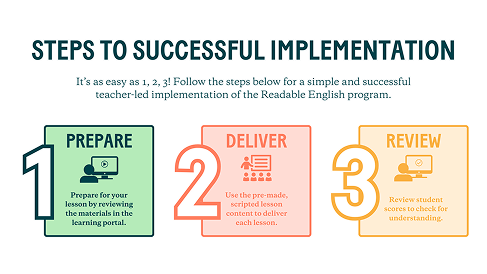The Science of Reading
Reading and literacy are perhaps the most researched aspects of education.
Thousands of studies of the teaching of reading, and how children learn to read, have been published in scientific and academic journals. Major reviews of the research literature agree not only on the key components of reading programs, but also the most effective way of teaching them.

Effective, evidence-based reading instruction
In 2000, following the largest, most comprehensive evidence-based review ever conducted of research on how children learn to read, the National Research Panel (2000) presented its findings.
The specific areas noted as crucial for reading instruction were phonemic awareness, phonics, fluency, vocabulary, and comprehension. The recommendations were that these be explicitly and systematically taught to students.
"In dyslexia, there is an abundance of high quality scientific knowledge, so that we have not a knowledge gap, but an action gap." ~ Sally Shaywitz M.D., a leading expert in dyslexia
The Five Key Reading Skills
- Phonemic Awareness - The ability to discern the sounds and the sequence of sounds within words.
- Phonics - The ability to decode words using knowledge of letter-sound relationships.
- Fluency - Reading accurately, quickly and with expression.
- Vocabulary - Knowing the meaning of a wide variety of words and the structure of written language.
- Comprehension - Understanding the meaning and intent of the text.
Systematic, Explicit Instruction
Systematic, explicit instruction is a teaching model, rather than a specific teaching program.
Reading research continues to demonstrate that explicit teaching of the five key reading skills (especially phonemic awareness and phonics) benefits all students and can significantly reduce literacy gaps. It is critically important for students at risk of reading failure.
- Teacher directed
- Planned and sequenced lessons
- Clear and detailed instructions and explanations
- Content and skills introduced in small steps
- Practice after each step
- Modeled and guided instruction and practice (‘I do, we do, you do’)
- Teaching to mastery
- Frequent, systematic monitoring and feedback
- High level of teacher-student interaction
- Cumulative reviews and spaced practice
Orthographic Mapping
Efficient orthographic mapping requires a reader to correctly decode, say, hear, and recognize new words several times to map them into their lexicon (mental dictionary of known words).
Readable English facilitates this process by making every English word decodable (phonetically transparent). The built in pronunciation guide provides the pronunciation cues necessary to accurately decode, say, hear and in turn recognize the word. This level of scaffolding supports readers who need a variety of supports, including English learners and students with reading difficulties/disabilities.


Contributing to the Science of Reading
To date, there are three independent, peer-reviewed studies on the effectiveness of Readable English. On average, students learning Readable English improve at twice the rate of students in control groups, for both reading fluency and comprehension. Typically these results can be seen as early as Phase 1 where students develop phonemic awareness, phonics and orthographic mapping.
.png?width=350&height=60&name=Readable%20English%20Logo%20(1).png)


